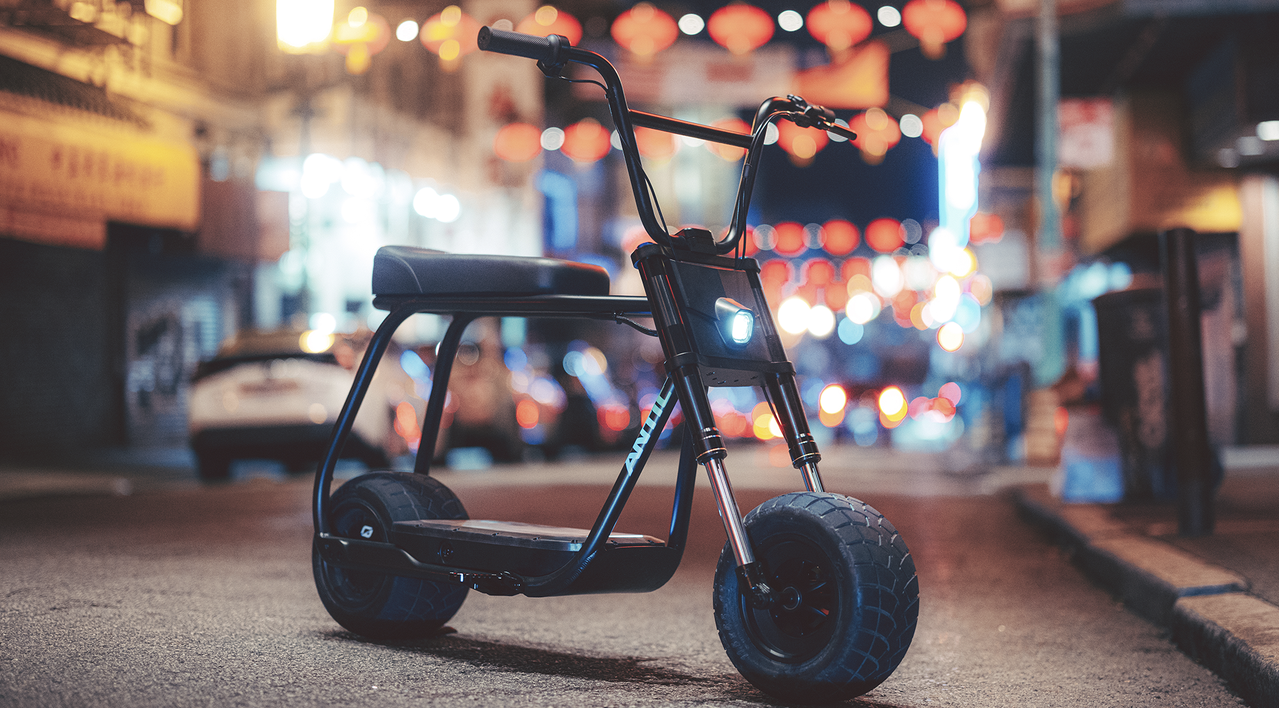A few years ago, a six-wheeled robot on a city footpath might have caught people’s attention. Today, it’s a common sight delivering food, groceries, and packages around neighborhoods and campuses.
Once experimental, delivery robots are now becoming an established part of urban mobility, linking e-commerce with local delivery networks.
From Prototype to Pavement

The rise of delivery robots began in 2014, when Skype co-founders Ahti Heinla and Janus Friis founded Starship Technologies in Estonia. Their idea was simple: if small, electric, autonomous vehicles could safely share sidewalks with pedestrians, they could deliver small packages faster and cheaper than vans.
In 2016, Starship’s first robots appeared in pilot programs across London and Redwood City, California. The robots looked unassuming, roughly the size of a cooler, but each carried sensors, cameras, and navigation software capable of mapping its surroundings and avoiding pedestrians. Early trials, such as Starship’s pilots with Just Eat in the UK and Postmates’ (later Serve Robotics) trials in U.S. neighborhoods, showed that sidewalk delivery robots could complete short-distance food deliveries autonomously under remote supervision.
At the time, it was more a curiosity than a business. Yet the idea resonated: global e-commerce was surging, cities were choking on delivery vans, and short-range automation was beginning to mature.
The Pandemic Effect
The 2020 pandemic became an unexpected turning point. With restaurants closed and online delivery suddenly essential, contactless logistics shifted from a luxury to a necessity.
Starship’s fleet, already active on several university campuses, quickly became critical infrastructure. In the U.K. and U.S., Starship robots delivered thousands of grocery orders each day, operating around the clock without human-to-human contact. According to the company, millions of deliveries were completed during the lockdown period across dozens of European and American cities.
Other startups took notice. In California, Serve Robotics, spun out of Postmates after its acquisition by Uber, began commercial trials of its own sidewalk delivery robots. In Europe, Delivers.ai, founded in 2021 and based in London and Istanbul, piloted fleets across the U.K., France, and Turkey, completing more than 100k real deliveries by mid-2024.
The pandemic accelerated the industry by several years and demonstrated that small, slow-moving delivery robots could handle repetitive local trips safely and reliably.
How They Work

A delivery robot is typically knee-high, with six wheels, an electric drivetrain, and a lockable cargo compartment. It travels on sidewalks or low-traffic streets, guided by a mix of sensors, cameras, ultrasonic systems, GPS, and AI-based navigation.
Each robot creates a detailed, real-time map of its environment. It identifies curbs, pedestrians, pets, and intersections, stopping when necessary, and can be remotely assisted by a human operator if it encounters an obstacle it cannot resolve.
Most deliveries begin at micro-hubs or local stores, where packages are loaded into robots for short trips of one to three kilometers. Upon arrival, customers receive a notification and a code to unlock the robot’s lid and retrieve their package. Once the delivery is complete, the robot returns to its base to recharge, often autonomously docking at its charging station.
What makes this model efficient is not speed, since most robots travel at five to eight kilometers per hour, but precision. They replace slow, fuel-consuming van routes with multiple small deliveries per hour, often within tight geographic clusters.
From Novelty to Adoption
Between 2018 and 2025, autonomous delivery robots evolved from a novelty into a legitimate logistics category. A decade ago, only a handful of pilot programs existed. Today, robots operate in more than 80 cities across North America, Europe, and Asia, according to public company filings and municipal mobility registries.
The landscape now includes:
Starship Technologies (Estonia/U.S.)

The company that pioneered sidewalk delivery robots in the mid-2010s is now one of the oldest and largest operators. Its technology is used not only in its own operations but also to power commercial pilots with delivery platforms such as Bolt Food.
Starship reports over 9 million completed deliveries by 2.7k+ robots operating across 270+ locations in seven countries, and has raised more than $280m across several funding rounds, including a $90m Series C in 2024 and an additional $50m in 2025.
Serve Robotics (U.S.)
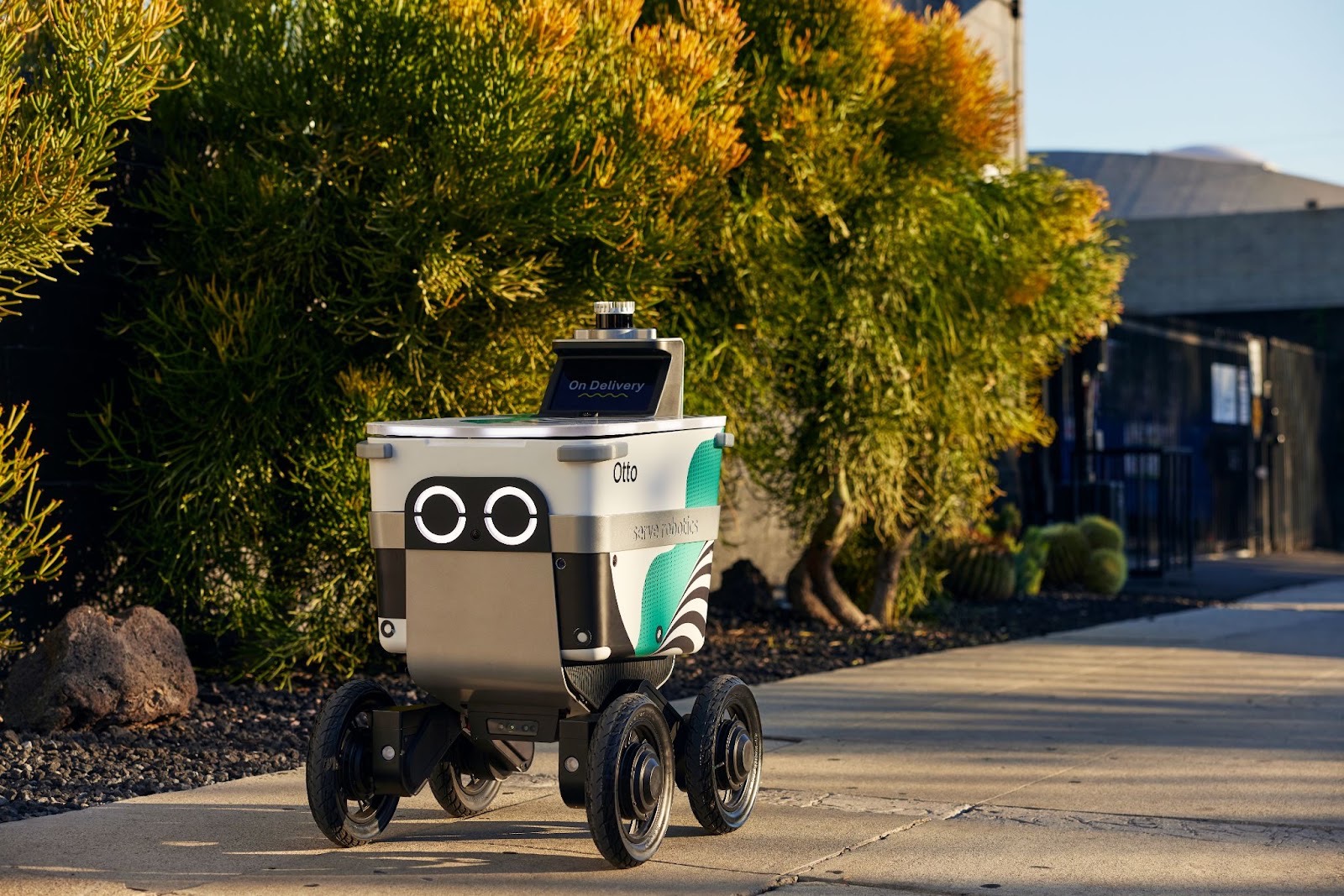
Backed by Uber, NVIDIA, and Delivery Hero, Serve operates semi-autonomous robots on sidewalks in Los Angeles, San Francisco, and Miami.In 2025, it announced a partnership with Uber Eats to deploy 2k delivery robots over two years. Around $220m raised in total, since becoming independent in 2021.
Delivers.ai (U.K./Turkey)
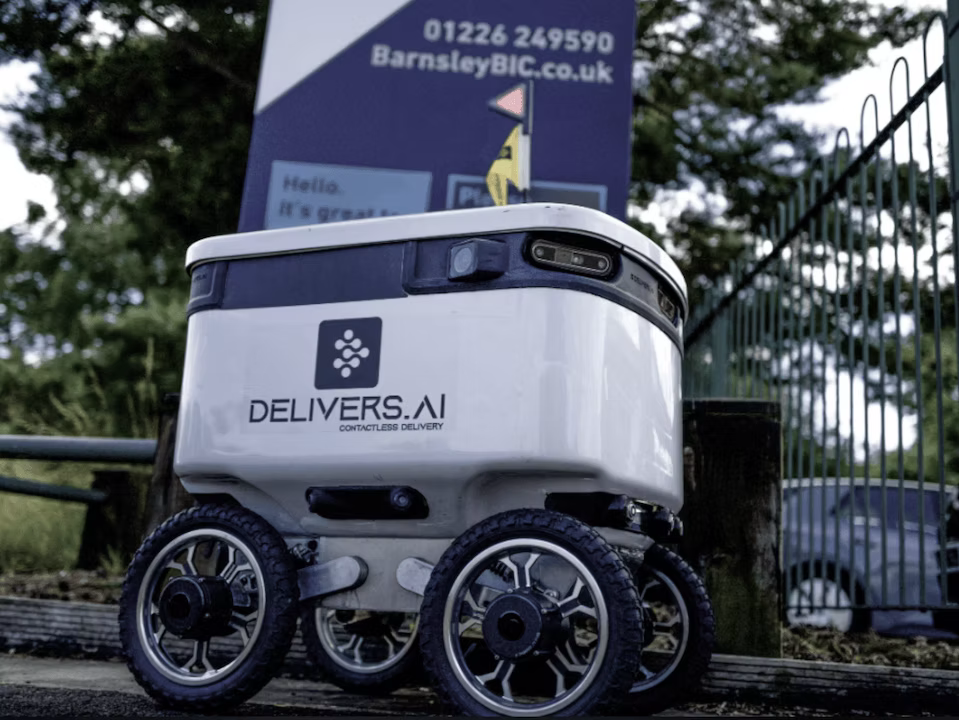
Delivers.ai positions itself as a Robot-as-a-Service (RaaS) company. It combines autonomous navigation with remote supervision, offering commercial clients subscription-based access to robotic fleets.
Coco Robotics

Coco Robotics operates small sidewalk delivery robots for food and local commerce, raised $80m in 2025 to scale its autonomous delivery fleet and expand deployments with partners like DoorDash.
Kiwibot (U.S./Colombia)
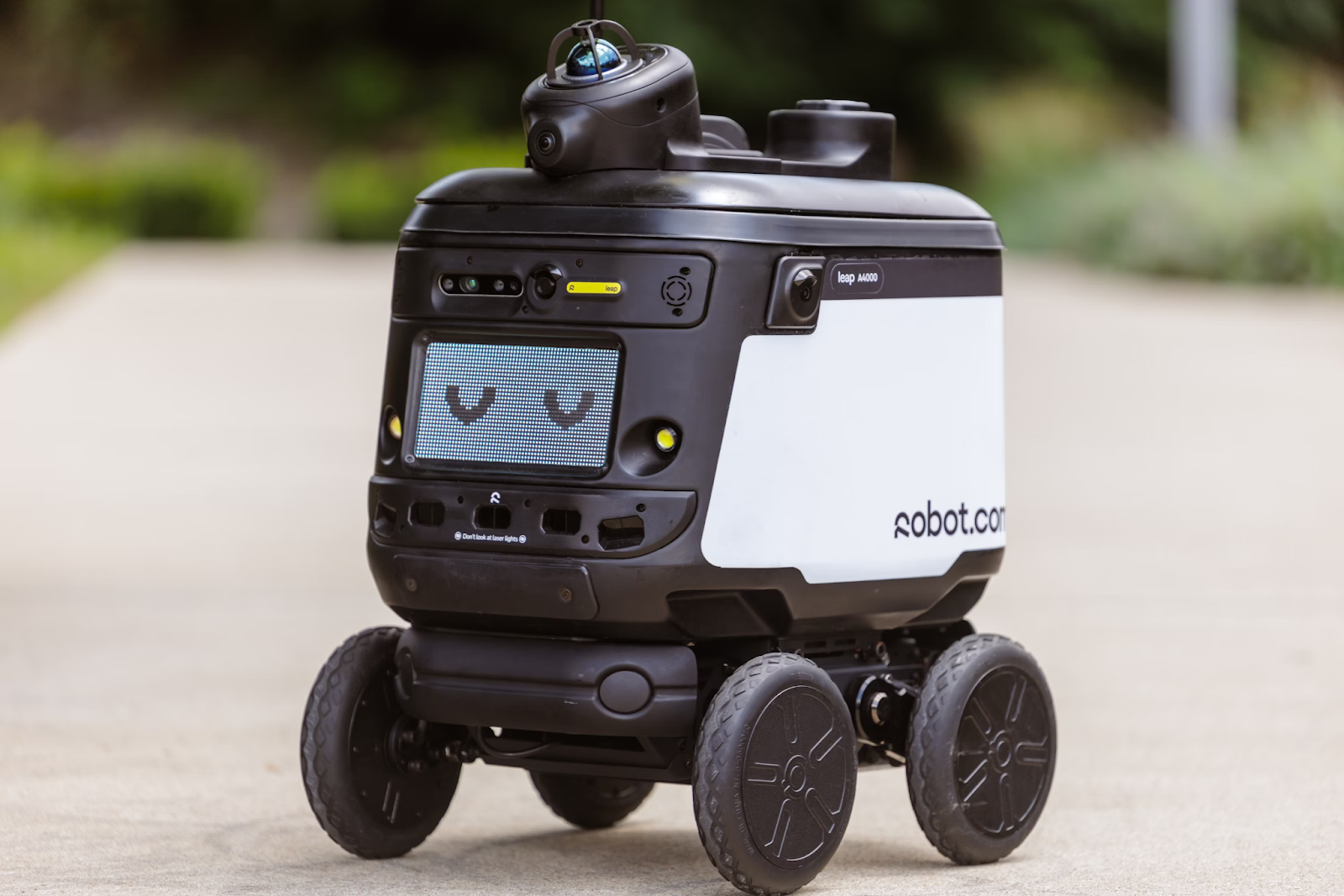
Kiwibot is a campus-focused operator that has completed more than 250k deliveries in collaboration with Grubhub and various universities. Kiwibot raised $7.5m pre-Series A in 2022, plus $10m in 2023 for fleet expansion.
The combined funding for these top players now exceeds $1B, signaling investor belief in a growing logistics sub-sector once dismissed as a gimmick.
The Next Wave: Expansion by Major Platforms

Early progress in the sector has encouraged wider participation from established companies.The most significant recent development is the introduction of Dot by DoorDash Labs, the company's first in-house autonomous delivery robot. Unlike traditional sidewalk bots, Dot is purpose-built for the suburban environment where a large portion of DoorDash's deliveries take place. The all-electric robot is about one-tenth the size of a car and is engineered for greater speed and maneuverability, capable of traveling up to 20 mph on bike lanes, sidewalks, and roads. Dot can carry up to 30 pounds of cargo, enough for six large pizza boxes,and is currently undergoing commercial deployment in cities like Tempe and Mesa, Arizona.
Its launch is integral to DoorDash’s new Autonomous Delivery Platform (ADP), which uses AI to automatically select the most efficient delivery method for each order, whether by human Dasher, Dot, or drone, cementing a future where autonomous and human delivery networks work as a hybrid system.
“You don’t always need a full-sized car to deliver a tube of toothpaste or pack of diapers. That’s the insight behind Dot,” said Stanley Tang, Co-Founder and Head of DoorDash Labs. "The breakthrough wasn't just making it autonomous, but in making it reliable and efficient to serve the needs of local businesses and consumers... Every design decision, from its compact size to its speed to the sensor suite, came from analyzing billions of deliveries on our global platform."
Technology and Regulation
The main technical challenge isn’t autonomy, it’s coexistence.
Robots must operate safely around pedestrians, cyclists, and pets, obey traffic laws, and adapt to unpredictable environments like curb cuts, parked scooters, or uneven pavements. To achieve this, many firms use hybrid autonomy: the robot handles 99% of navigation, while remote human supervisors monitor multiple units and intervene when needed.
Still, regulation remains uneven. In the U.S., some states like Virginia and Pennsylvania have legalized sidewalk robots with weight and speed limits. Others, like New York and San Francisco, maintain stricter controls or pilot-only frameworks. In Europe, Estonia, Finland, and parts of the U.K. have led adoption, while other nations await EU-wide standards.
A major reason for this fragmentation is legal classification. To avoid strict vehicle registration laws, the industry has successfully pushed over 20 U.S. states including Pennsylvania and Virginia to legally define Personal Delivery Devices (PDDs) as "pedestrians.” This allows them to operate on sidewalks, typically capped at speeds of 6-12 mph. However, this victory has triggered significant friction with disability rights groups. Cities like Toronto implemented a ban on sidewalk robots in late 2021 (still largely in effect today), citing concerns that the devices obstruct wheelchair users and violate accessibility standards like the AODA and ADA.
Even major players have stumbled: Amazon ended its Scout program in 2022, citing limited scalability. The episode reinforced a key lesson: autonomy alone isn’t enough. Reliability, regulation, and public trust are just as critical.
It is also marked by global shifts and privacy concerns. Though, Japan marked a major milestone in April 2023 by amending its Road Traffic Act to explicitly legalize "remote-controlled small mobility" devices on public streets, opening one of the world's densest markets. Meanwhile, privacy remains the next regulatory frontier. Because these robots rely on cameras and LiDAR for navigation, regulators in the EU (under GDPR) and California (CPPA) are increasingly scrutinizing data retention, demanding strict protocols to prevent these fleets from becoming rolling surveillance networks.
This fragmented legal landscape reflects the early days of micromobility scooters, when innovation moved faster than policy.
The Economics of the Last Mile
Last-mile delivery can account for around half of the total cost of shipping, with some industry data putting it at about 53%. Small, electric delivery robots tackle this inefficiency by replacing labor-intensive van routes with autonomous, localized loops.
Analysts estimate that in dense urban areas, a fleet of robots can reduce delivery costs by 20-40%, particularly for repeat, low-value orders like groceries or restaurant meals.
Operational savings come from lower labor costs, electricity instead of fuel, and optimized routes.
Still, profitability depends heavily on density. Robots make economic sense in compact, high-order areas, not in suburbs or rural zones. That’s why most current deployments remain concentrated in university campuses, tech parks, and mid-size cities with supportive infrastructure.
The Robot-as-a-Service Model
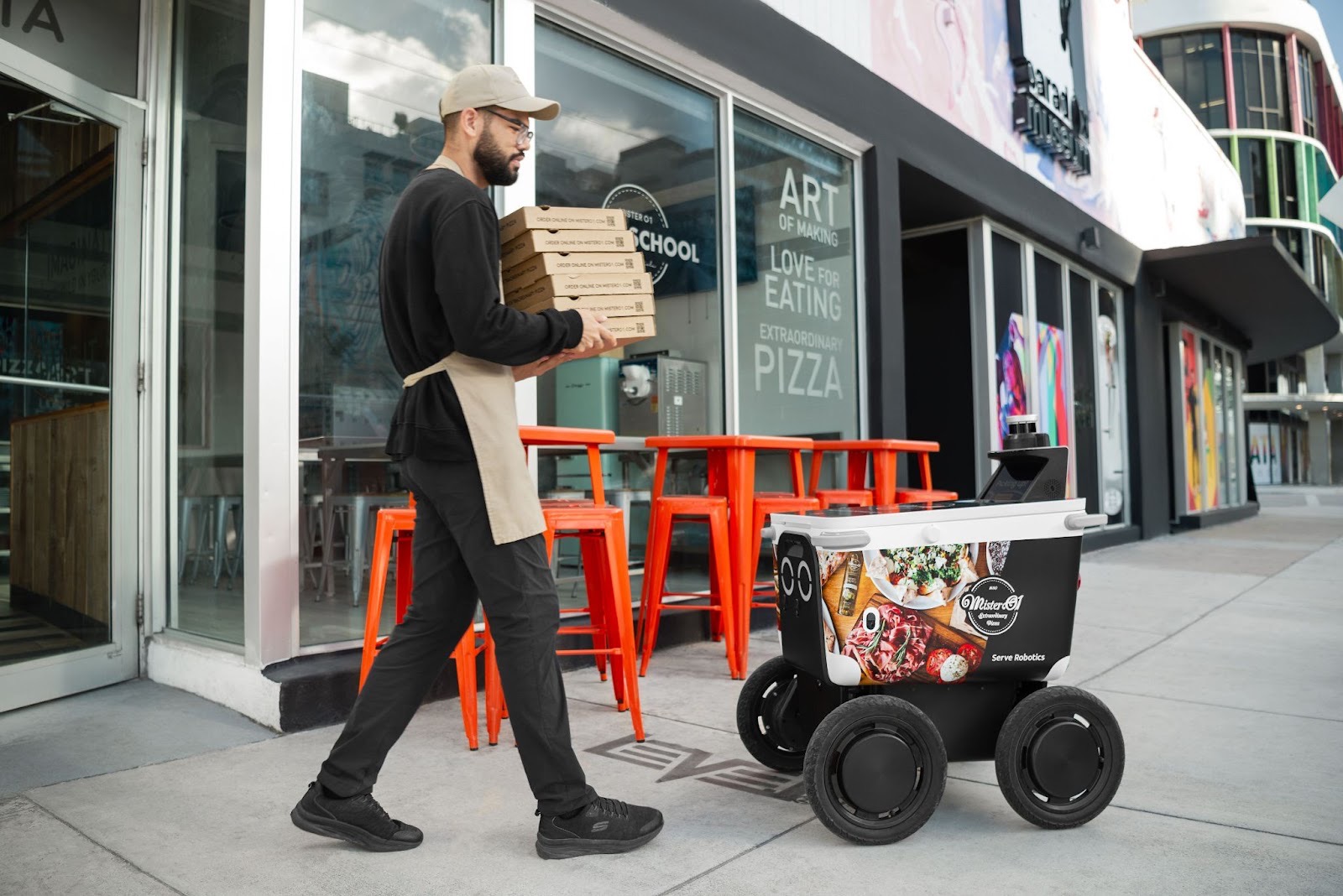
Rather than selling robots outright, most companies now operate under the Robot-as-a-Service (RaaS) model. Businesses, such as restaurants, grocers, or logistics providers, pay per delivery or subscribe to a fleet package.
This shift mirrors the industry’s move toward shared fleets and software-managed operations. RaaS allows faster scaling, predictable revenue, and better fleet maintenance, while giving smaller merchants access to automation without upfront investment.
Delivers.ai and Serve Robotics both adopted this approach early, positioning themselves as logistics infrastructure providers, rather than hardware makers.
Global Market Outlook
A report estimates that the global delivery robots market will grow from roughly US $0.80B in 2025 to US $3.24B by 2030, at a CAGR of around 32.4%, signaling rapid maturity as sidewalk delivery robots move from pilot deployments to commercial logistics infrastructure. While it’s small compared to global logistics spending, the pace of growth indicates a rising niche transitioning from pilot to infrastructure.
Investors view the sector as a long-term bet, less about replacing couriers entirely and more about complementing human delivery networks. Hybrid models, where robots handle short loops and humans handle complex deliveries, are becoming standard.
The Long and Short of It
Autonomous delivery robots have moved quietly but steadily from concept to reality.
In just over a decade, they’ve evolved from lab prototypes to functioning logistics fleets, funded by hundreds of millions of dollars and integrated into everyday urban life.
They’re not here to replace human couriers or delivery vans overnight, but to fill a gap in the city logistics chain: the short, repetitive, high-frequency routes where autonomy makes sense. As cities pursue cleaner, quieter, and more efficient mobility, delivery robots are likely to become a fixture of that transformation.
Small, slow, and persistent, they represent a subtle but profound shift in how goods move through cities, a new chapter in the story of micromobility, written not on two wheels, but six.

.svg)
%2Bcopy.jpeg)


.svg)








